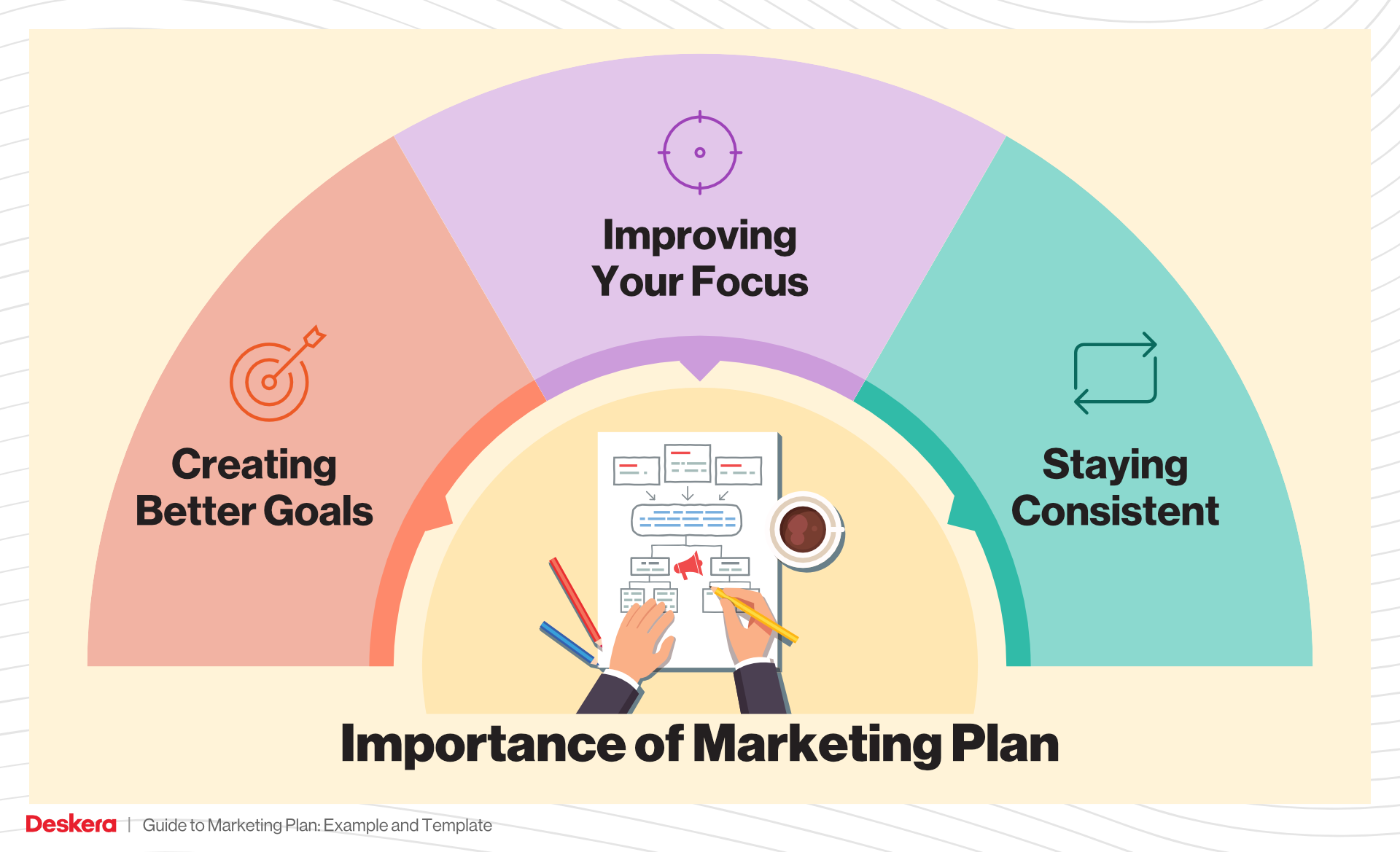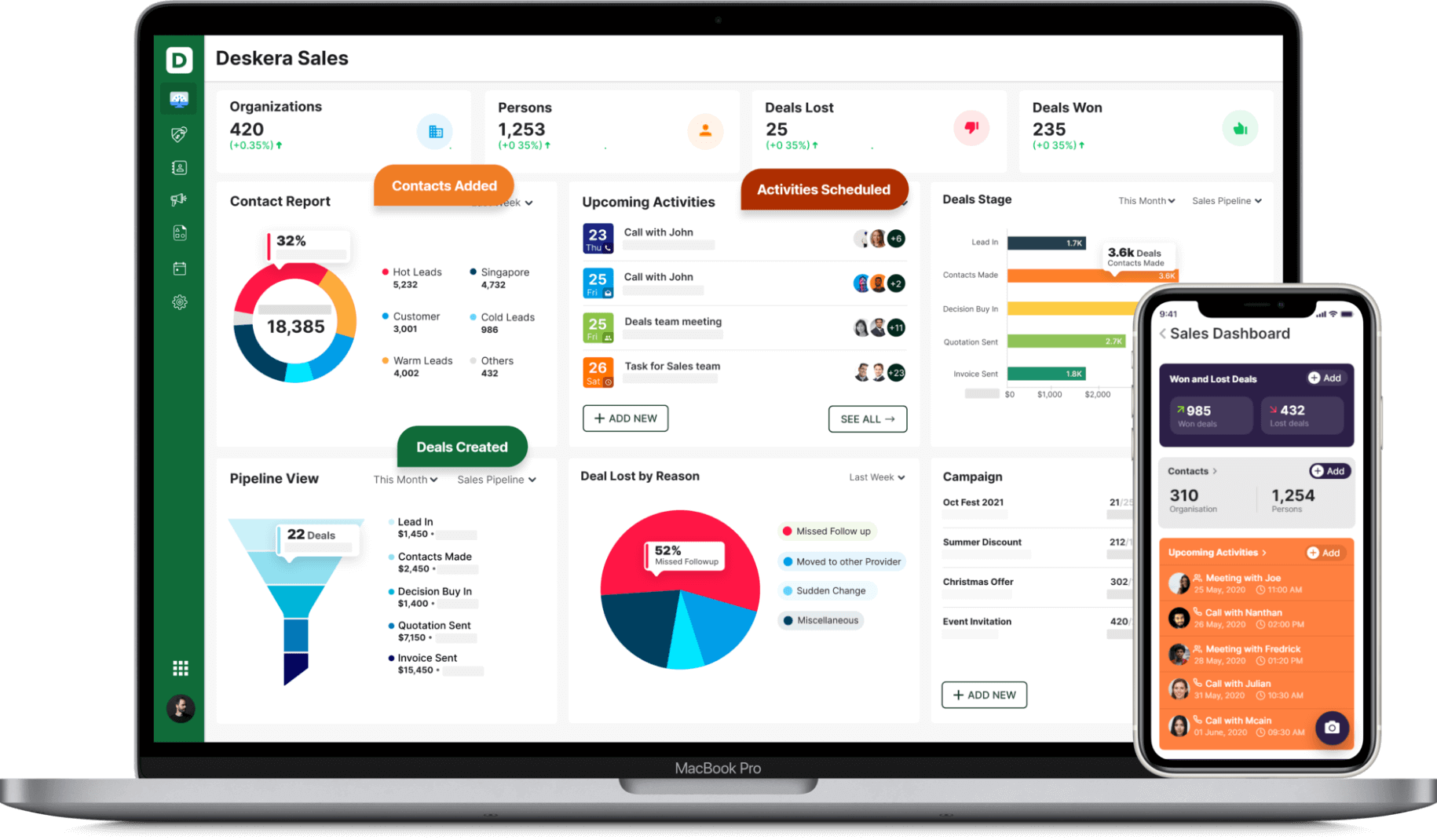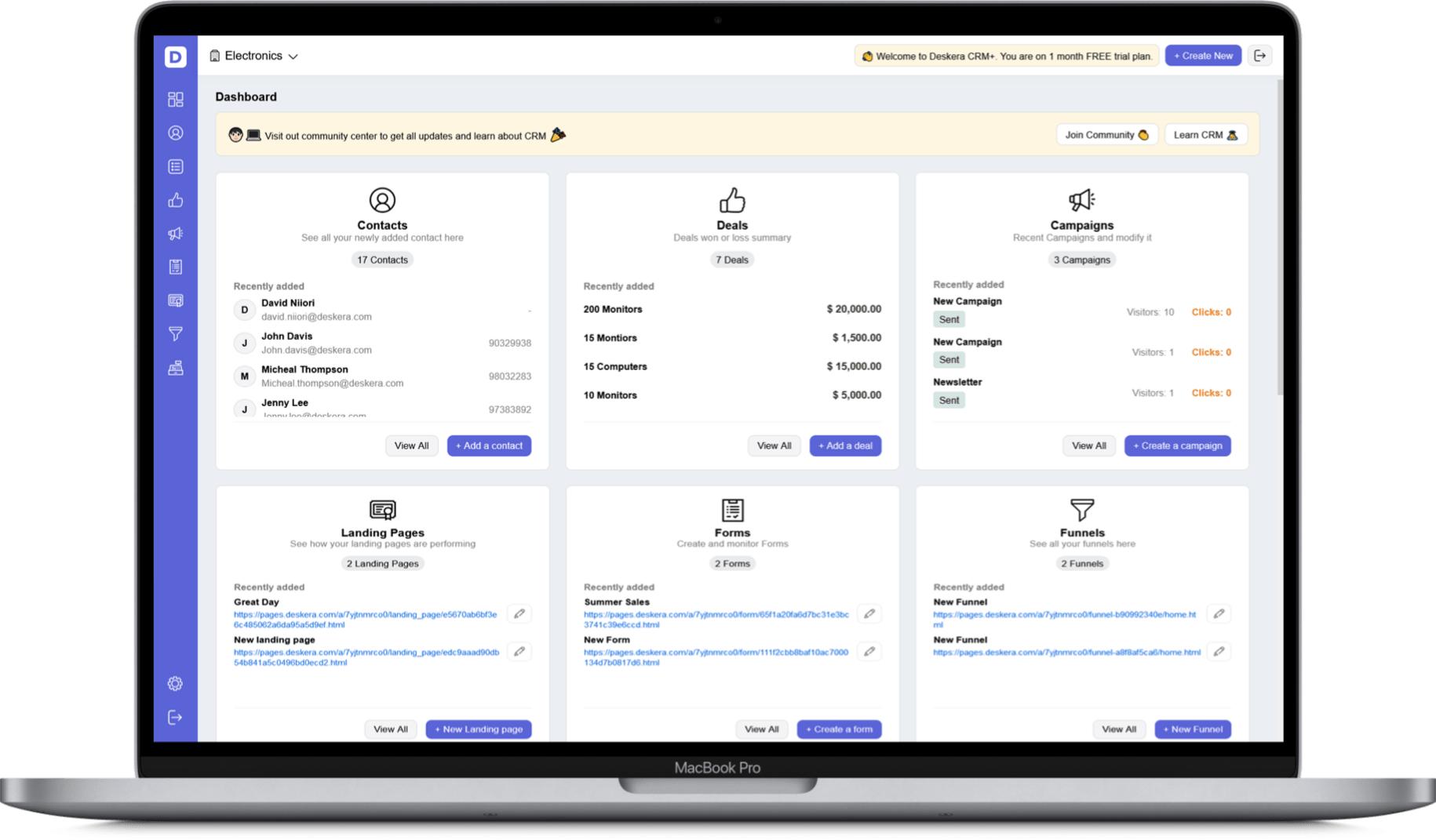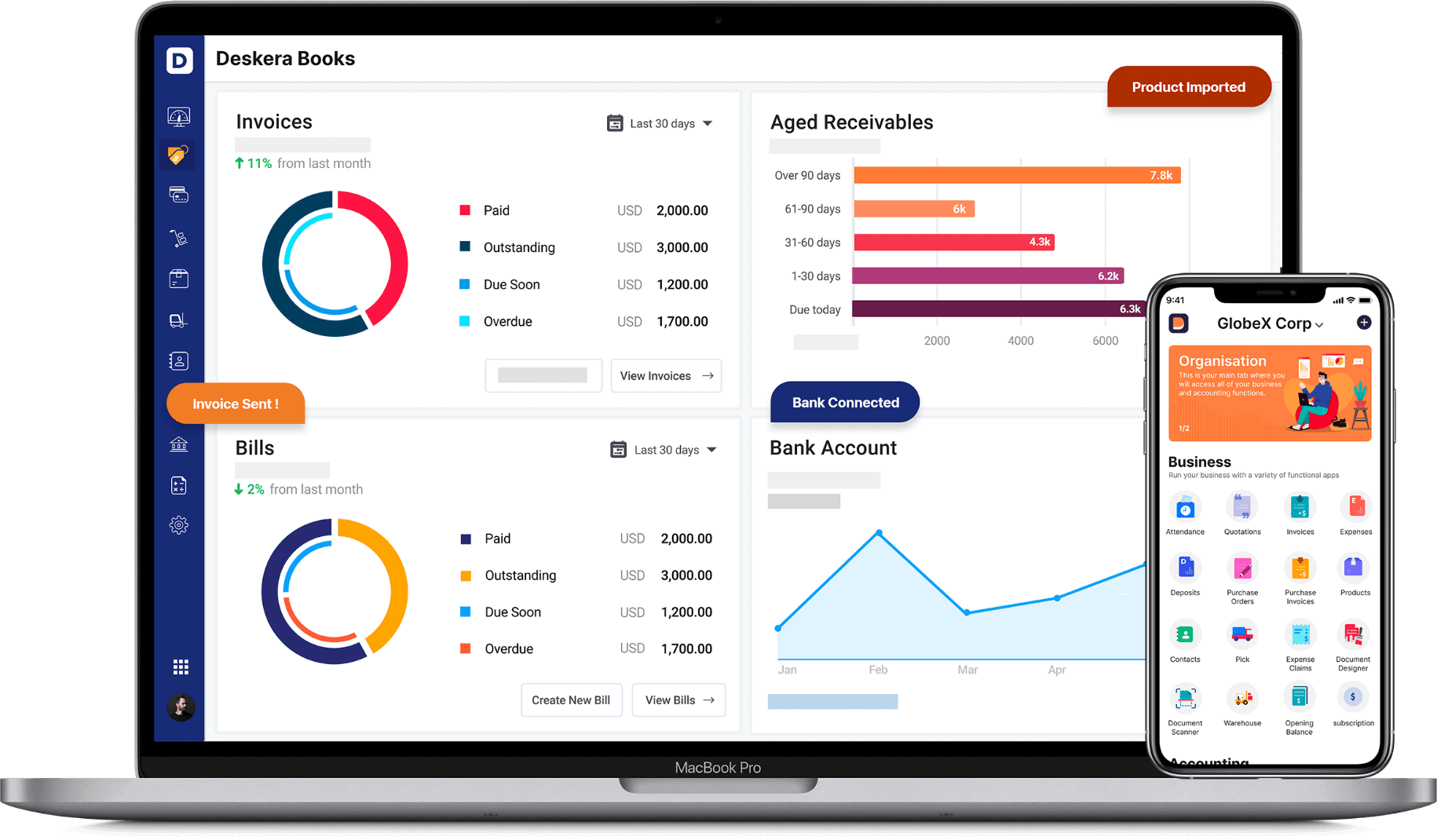For any business to succeed, it has a set of Holy Grail. Two of these are:
- A great product or service
- A comprehensive marketing plan
A marketing plan hence is the architectural blueprint of building your business. It is aimed at achieving business goals like increased sales, higher net profits, strong customer loyalty, bringing about brand awareness, and so on. While most of these goals are shared across all businesses at one point or another, what is not shared is their brand marketing, their product and services, their sales cycle, and therefore their marketing plan.

Marketing is a constantly evolving process that any business engages itself in. It is susceptible to customers’ perception of your business, marketing strategy, and your products or services. Additionally, it also gets affected by your business’s competitors and other affecting business environments. In the midst of all these dynamics, the only way to not lose yourself is by developing a marketing strategy that has all of these factors considered and looked after.
This article is aimed at being a guide of marketing plans for you.
What is a Marketing Plan?
A marketing plan is a document that details how you are going to execute your marketing strategy. It is written for a specific period of time and explains your current situation’s analysis as well as your future plans. It also defines your sustainable competitive position as well as the resources that would be needed to achieve your goals.
This hence means that your marketing plan can be a part of your overall business plan. The foundation of a well-written marketing plan lies in having a solid marketing strategy that is designed in accordance with your goals and objectives. When written on the basis of your marketing strategy, your marketing plan becomes realistic and workable, also leading to more proportion of qualified leads, better sales prospects, maximization of returns on investments, and improved cash flow.
The marketing plan can be written for a month, for a quarter, or even for a year. Its scope can be narrow or wide. For example, a marketing plan for your business’s social media marketing is a narrow scope marketing plan. On the other hand, a marketing plan that focuses on the entire marketing strategy of your business is a broad scope marketing plan.
The right marketing plan does everything for you. From identifying,
- Your target customers
- How will you reach them?
- How will you retain them so that they repeatedly buy from you?
Till your budget, the key performance indicators that you would be tracking as well as the methods and forms of marketing that you would be implementing.
Importance of Marketing Plan
There are a large number of reasons as to why a business needs a marketing plan. The top three of those reasons are:

Creating Better Goals
A marketing plan is designed to help you achieve your specific goals. It is always more effective when you have specific goals to achieve rather than when you have generic goals. With specific goals, like, for example, what ACV and ARR are you aiming to achieve at the end of the quarter, you would be better able to plan your actions.
With actual target marketing key performance indicators, you would be able to draft the exact road-map that would help you achieve your goals. These goals should be SMART goals, i.e.,
S: Specific
M: Measurable
A: Achievable
R: Relevant
T: Time-framed
When you have specific goals and a specific way in which to meet them, you would be able to increase your business’s revenue, increase customer satisfaction and even be able to ensure healthy financial statements of your business.
Improve Your Focus
With a marketing plan, you would be able to improve the focus of your marketing efforts as specified by your marketing strategy. What tasks need to be undertaken and how they should be undertaken are all a part of a marketing plan, which, when followed, will help you to achieve your business goals.
While marketing is an activity that is constantly evolving, your marketing plan will ensure that your marketing efforts are not ineffective or messy but rather so organized that your next marketing plan outline is ready even before the time period of the current one ends. Such a marketing plan will also act as a guide for your appointed marketing agency.
Stays Consistent
The key to successful marketing is consistency. This stays true across all marketing channels- whether it is social media platforms like Instagram marketing or influencer marketing or offline marketing like event marketing, or other types of marketing like relationship marketing. Now what remains consistent is to be decided by you, but it should be aligned with your brand positioning statement.

For example, McDonald’s has kept its golden arch consistent across all its marketing, Nike has kept its storytelling habit consistent across all its marketing on different platforms, and so on. With such consistent marketing, you would be able to get better and faster results. To maintain this consistency and, therefore, the momentum, a marketing plan is most beneficial.
7 Elements of a Marketing Plan
The seven elements of a marketing plan which also make the marketing mix are product, price, promotion, place, people, process, and physical evidence. This marketing mix strategically places your business in the market, and each of the elements can be used with varying levels of force. The force used is determined on the basis of the satisfaction of the target audience, customer feedback, competition, and value perception of your product, services, and brand in the market.
In this section of the article, I will be taking you through these seven elements of a marketing plan in detail.

Product
This is in reference to the product and services that your business offers. Decisions within this element include:
- The purpose of your products and services
- How will the product and service look
- Packaging of the product and service
- Warranties and guarantees
- After-sales service to be offered
And so on.
When talking about your first P, i.e., product in your marketing, you would have to cover the following information for your consumers as well:
- What is included?
- The need or want that it will fulfill.
- Why is your product or service better than that of your competitors?
And any other relevant information as per your buyer personas.
Price
This element of the marketing plan will cover the entire pricing of your product and services and how your customers will react to them. In addition to the sales pricing, it will also include special offers, discounts, terms, fees, and so on. Your pricing should be determined according to your brand identity and positioning, as well as your position against the competition. For example, if you are selling high-quality products, your pricing should reflect it.
Promotion
Promotion is that element of the marketing plan which is all about making your consumers come to know about your product. It can be done so through video marketing, affiliate marketing, sponsorship, landing pages, and CTAs, etc. When done correctly, the promotion will result in an increase in sales, net income as well as gross profits.
Place
Place as an element of marketing plan covers several locations starting from where your product and services are made, where they are distributed and sold till where your ads are made and distributed. Through this element, you would also be required to ensure that your customers not only find your product and services with ease but also at the right place and right time.
You can consider selling your products through brick-and-mortar stores, eCommerce, or channel sales. The medium of your sales should be decided on the basis of your customers, and what they would prefer and most respond positively to.
People
In addition to your customers, people in your marketing plan also refers to your sales team, marketing managers, sales manager, customer success manager, and every other staff member who is involved in making your sales and marketing process a success.
Your employees should be perceived positively by your customers, for only then would they be convinced to move down the sales funnel and eventually become returning customers.
Process
This refers to all the steps that are to be taken before a product or service is delivered to your customers. Here, you will need to outline all the functions, activities, tasks, and processes so that they all run smoothly and efficiently. You should check your processes frequently to ensure that they are running smoothly and increasing your ability to earn revenue.
However, be ready for many trials and errors before you get it right for a specific audience during a specific time period. This element of the marketing plan too will have to be updated with changes in trends associated with it.
Physical Evidence
Your customers would also prefer to get the physical evidence of the product or service they have purchased. This gives them validation while also making them feel good about their purchase. These happy and proud emotions would also be beneficial to you, for their good customer experience will make them repeat customers leading to positive effects on your income statement. This is hence an important element of the marketing plan.
Physical evidence can be in the form of an invoice of purchase, a receipt of purchase, thank-you notes or freebies, a new look after going to a hairdresser’s for a haircut, etc.
14 Steps for Writing Your Marketing Plan
Writing down a marketing plan will help your business generate more leads, close more deals, increase your net sales, successfully address your customers' pain points, and even in scaling your business. However, the steps for writing down an effective and comprehensive marketing plan are:

Table of Contents of Your Marketing Plan
A marketing plan can become very lengthy, which makes it important to have an outline in the form of a table of contents. Based on your outline, you would then be quickly able to find the relevant information. This outline will include:
- Executive Summary
- Mission Statement
- Marketing Goals
- Standards of Performance
- Core Competencies
- Situational Analysis
- SWOT Analysis
- Target Audience Description
- Audience Personas
- Product, Place, Price, and Promotion
- Pricing Strategy
And any such information that you would like to be a part of your marketing plan.
Write an Executive Summary
An executive summary is a small, summarized version of your entire marketing plan. An executive summary is for all those who would not have the time to read your entire marketing plan in depth. This hence means that your executive summary should have a brief description of all the relevant components so that they can get the full picture.
While the executive summary should be written last so that you know what you would like to include here from each section of your marketing plan, its placement in your final document of the marketing plan should be here.
Before writing your executive summary, though, you should be asking yourself the following questions:
- What types of customers are you targeting?
- What patents or products and services would you be specifically marketing?
- What unique partnerships would you leverage to succeed?
- What makes your marketing plan special?
- How will your company stand out?
- What is your position against your competitors?
- What problem are you solving?
- What solution are you offering for solving the above-mentioned problem?
- Why is this the correct time to offer your solution?
While all of these should be summarized and answered in your executive summary, the last question is especially important to design marketing campaigns that highlight the correct timing (or urgency) for the solution that you are offering.
Drafting and Deciding Your Mission Statement
The mission statement of your company, which should be a part of your marketing plan, should answer these questions:
- What do we do?
- How do we do it?
- Who are we doing it for?
- What value does your organization bring to its customers?
All of your business activities should be based on your mission statement, and in fact, when in doubt if you are still moving in the right direction, you should cross-check it with your mission statement.
For example, Google’s mission statement is: “Google’s mission is to organize the world’s information and make it universally accessible and useful.”
Amazon’s mission statement is: “Our vision is to be earth’s most customer-centric company; to build a place where people can come to find and discover anything they might want to buy online.”
Figuring Out Your Goals
You can only gauge your performance if you have a certain target to compare it with. This target is what you need to figure out and mention in your marketing plan. When it comes to your goals, you should know your financial as well as non-financial goals.
The financial goals of your marketing plan should include:
- How much money do you want to generate with your marketing? These can also be measured in terms of operating income, account receivables.
- How can you make your market earnings and spending align with your business goals?
- What are the account payable and operating expenses that you can incur as per your marketing budget?
- Which financial KPIs would you like to use to track your marketing activities’ performance?
- Can you calculate the number of sales needed to earn your pre-determined revenue?
The non-financial goals of your marketing plan should include:
- How have the marketing efforts led to an increase in traffic, conversions, and boosting of engagements?
- How are your marketing KPIs faring?
- What is the ratio of your sales through relationship selling, sales referral, paid social media advertising, and social selling?
And so on.
However, you should make your goals SMART like this:
- Specific- Focus on one metric
- Measurable- Establish a way to measure your goal performance
- Aspirational- Make sure your goal pushes you beyond your current performance. For example, a 15% increase in cross-selling and upselling of your services.
- Realistic- Make sure your goal is achievable
- Time-Bound- Set a deadline to achieve your goal.
An example of a SMART goal can be getting 1k followers on your Instagram Handle by 1st June 2022. To achieve these goals, you can take help from marketing tools as is available in your resources.
Editorial Guidelines for Your Marketing Materials
These guidelines will keep all your marketing materials in line with your brand identity, have consistency and keep all your content developers on a specific track as pre-established by you. While deciding your editorial guidelines, they should be of a quality that your competitors lack while also giving you an edge over and above your competitors and more than just in terms of better quality. To find what makes you unique, you should get analytics on your highest-performing content and decide accordingly.
Determining Your Core Competencies
Determining your core competencies is a crucial part of your marketing plan, as this will help in designing marketing campaigns that highlight how you are better than other businesses in your industry. It will show your customers why they should choose you over others, and this is supported by the value created by your business and its products and services. This is expressed through your marketing campaigns.
Some of the questions that will help you in knowing your core competencies are:
- What makes your company unique?
- What values does it bring to its customers?
- What proof do you have to prove your above-mentioned competencies?
While you are at this step of your marketing plan, you can even take the help of your employees. You can organize a survey that asks questions like:
- What are our strengths as a team?
- What are our strengths as a company?
- What are the strengths of our products or services?
- How are we best in our industry or niche?
Such surveys would also serve the purpose of improving employee engagement as well as motivating your employees.
Undertaking Situational and SWOT Analysis
Situational and SWOT analysis are beneficial as well as important in your marketing plan as they help you figure out the scope you have in the current environment as well as your status in it.
To perform a situational analysis in order to understand your marketing situation and how you should take it further, you should include:
Company’s Outline-
- Statistics about company size, location, employees, etc
- Tagline
- Unique selling proposition
- Sector
- Brand awareness
Competitor’s Outline-
- Products and services
- Universal selling point
- Strengths compared to your organization
- Weaknesses compared to your organization
This should be followed by an analysis of the internal and external environmental factors that will impact your company’s performance in terms of returns on investment, bank reconciliation statements, and so on.
This analysis can also include economic and sociological factors like the financial trends in your industry or company demographics. For instance, if your company is about candles and decorative lights, based in India, you are more likely to have a higher proportion of sales in terms of number and amount during Diwali.
After situational analysis, you should have a SWOT analysis in your marketing plan. The SWOT analysis would be as follows:
- Strengths: In what areas does your company or its products and services excel?
- Weaknesses: In what areas can your company or its products and services improve on?
- Opportunities: What external opportunities do you see for market success?
- Threats: What external threats can present difficulties to you?
In addition to this, you should also know what the best practices in your company are. Is it the well-performing marketing channels? The buyer personas with large purchasing intent? Marketing campaigns that have generated lots of leads? Knowing these practices will help you to grow upon them and ensure more success towards achieving your goals and objectives.
Target Market and Connecting Your Message to Them
Your marketing plan should mention your target market as based on them; you would be designing your marketing campaigns. The target market can be a consumer market or a B2B market, etc., and includes all the industries that you want to sell your products and services to. Considering that this information is the foundation of marketing activities, it should be as detailed as possible. Some of the questions you can answer for the same are:
- Which companies are in your target market?
- How can you reach them?
- Why would companies in these industries buy your products or services?
- Why would companies from these industries buy your products or services?
- What are these companies' current needs?
And so on.
Tools like google analytics or other web visitor tracking tools can help you in discovering your current audience along with their geolocation and language, interests, demographics, and even their behaviors like how frequently they visit your website. While such statistics serve as the base for you to start your audience research, to find your target audience, you will need to answer the following questions:
- How would you describe your current best customers?
- Why did these customers look for a product or service like yours?
- Why did they choose you and hire you?
- How did these customers benefit from choosing you over your competitors?
And so on.
Buyer Personas
After you have defined your target market, it is now time to understand your customers in detail. This will help you in finding out who will actually buy your product or services. In this section of your marketing plan, you will be creating your buyer personas so that you can anticipate your marketing attribution and design your marketing campaigns like email marketing campaigns, landing pages, etc., accordingly.
Your buyer persona in your marketing plan should answer the following questions:
- Who are they?
- What is their personality?
- Details about their family life
- What are their values?
- What do they do?
- What is their job title?
- Where do they work?
- Where do they live?
- What is their income level?
- What are their challenges?
- What are their needs?
- What are their pain points?
- Why and when do they buy?
- How can your product or service help them overcome their challenges?
And any other relevant information that will assist you in your marketing activities.
Define Your 4 P’s to Know Your Go-to Marketing Strategy
The 4 P’s are Product, Price, Place, and Promotion. Once you have these defined, it will become easier for you to center your marketing around your product and its relevance to your target audience. While finalizing your 4 P’s, your target market and buyer persona, as discussed in the previous sections of your marketing plan, should become your base.
To define your 4 P’s, answer the following questions:
What product are you marketing?
- What does your audience want?
- Why do they need it?
- What makes it special and different? Why should your audience care and choose it?
Where should you sell your product?
- How will you sell your product?
- Would you be selling it through a physical store? Through eCommerce? Etc.
How much should you sell it for?
- Is your price a good value for what your customers are going to receive?
- How does your price compare with your competitors and others in the market?
- Which sales pricing strategy are you going to use?
How are you going to promote your product?
- Where are you going to promote your product or content?
- How are you going to get your product in front of people and get them to notice it?
- Will you use advertisements to promote your product? If yes, where will you display them?
Once you have identified the specifications of your 4 P’s, you will have a marketing path to follow that will lead to the goals that you want to achieve.
Understanding Your Pricing Strategy
While pricing strategy is primarily taken as a business strategy, what everyone fails to realize is that it is as much of a marketing strategy as it is a business strategy. Here’s how:
Matching Your Pricing Strategy to Your Value Proposition
Your pricing strategy should match with the value that your organization has promised to make. This hence means that your pricing should match the value you market of your products. This is why pricing strategy is such an important part of your marketing plan, ensuring that when done properly, you have a higher number of lead prospects requiring lead management from you so that you also have good conversions from the same.
For example, if your main value relates to luxury and premium products, having an economical pricing strategy would contradict this marketing done by you.
Analyze Your Competitors’ Prices
You should note how your low-end, average, and high-end competitors have priced your products. Your next step would be to determine where you are positioned in that mix. For example, if your product is supposed to be economical, your pricing should be placed near that of your low-end’s competitors.
Determine Your Customer’s Price Sensitivity
Understanding your customers' journey would also help you in determining their price sensitivity. Your marketing plan as a whole and including pricing, is designed in accordance with your customer’s preferences and values and knowing their price sensitivity is essential because it will tell you the degree to which pricing will affect your customer’s purchasing decisions. For example, if a high price will make it less likely for your customer to buy, then you would have to balance this price sensitivity with the rest of the pricing determining factors.
Some of the examples of pricing strategies are:
- Economy Pricing- This pricing strategy is about charging low prices to attract a large number of customers.
- Skimming Pricing- Setting the highest possible price when the product is new and then reducing it over time.
- Competitive Pricing- Setting your prices such that they are similar to your competitor’s pricing.
Setting Up a Marketing Tactic Checklist
After you have all the main components of your marketing plan in place, your next focus would go on how to execute it all properly. Here is where a marketing tactic checklist comes in handy, which will outline just what you need to do and when.
For example, if you divide your marketing plan into 3 phases,
Phase 1: Discovery and On-site Optimization
- Look over all conversion points
- Research keywords
- Create SEO plan
- Implement SEO plan
- Create a paid search campaign
- Make editorial calendar
And so on.
Phase 2: Digital Marketing Channel Building
- Building conversion-optimized landing pages
- Research social media advertising options
- Create social ad campaigns on chosen platforms
- Make graphics for display advertising
- Writing blog posts
- Scheduling your posts
And so on.
Phase 3: Maintenance
- Running weekly ad campaign reports
- Having bi-weekly marketing meetings
- Writing more blog posts
- Scheduling social media posts
- Creating premium content for lead magnets
- Performing community outreach
And so on.
Making a Value Complexity Matrix
This is another important part of your marketing plan because each marketing tactic will bring its own value and difficulty level to your business. A value complexity matrix will help you in prioritizing actions based on their complexity and the value that they are bringing to your business.
To do so, you will need to organize your marketing tactics in any of these four categories, as is relevant:
- High Value, Low Complexity- These are the easy wins and should take the top priority.
- High Value, High Complexity- These are the initiatives that will take more time and strategy, but in the long run, pay off.
- Low Value, Low Complexity- These are the tactics that might be worth your time, but it depends on how you manage your other marketing tactics before you get it's worth.
- Low Value, High Complexity- These are best not to take action upon. It will save you lots of time and effort.
Estimating Your Marketing Plan Budget
Your marketing plan will be incomplete if you have not included your budget in it. Your marketing plan should be concluded with an overview of your budget as well as your spending priorities. This will facilitate faster marketing decisions as now you would also have financial context.
In your budget overview, you should define your total budget and then break it down into the costs for each project that you want to do. Your projects should then be organized as per their needs and wants.
- Needs- These are the projects that your business needs to execute in order to have a successful marketing strategy.
- Wants- These are those projects which are nice to have but are not crucial to the success of your marketing strategy.
This demarcation is then followed by you calculating how much of your budget would be utilized by the needs, and the remaining would then be delegated amongst your wants.
Also, note that there two ways in which you can budget:
- You can build your budget based on your last year’s spending.
- You can build your budget from scratch.
Marketing Plan Examples and Templates
Based on your goals and objectives, your priorities, the product and services that you offer as well as your marketing strategy, you would be designing your marketing plan. Two of the marketing plan examples and templates for your use are attached below:
- Two Page Marketing Plan
- Marketing Plan Outline
How can Deskera Help Your Business in Marketing?
Deskera is a software dedicated to making your life easier when it comes to your business. Running a business can often get tricky, and while it is worth it all, it would not hurt to have a little help. This is where Deskera and its products come into the picture. Marketing is as important a function of your business as sales is. They have a shared co-dependency with several similarities.
The 1st one being that they both are volatile to environmental changes and hence need to be tracked constantly. Through the dashboards of Deskera CRM, you would be able to track all your marketing metrics so that you can gauge the performance of your marketing campaigns.

When it comes to tracking the performance of marketing activities like landing pages, Deskera CRM+’s landing page dashboard helps. These mention the conversion rate, number of total visitors on your page, and other such analytics. Deskera CRM+ and Deskera CRM can hence also help you in checking your website’s core web vitals.
Marketing is not always about getting new leads that require lead management but also about retaining the existing customers. To do so, you can send automated yet personalized emails to your customers through Deskera CRM, which is designed to help you with such follow-ups.
In fact, through Deskera CRM+, you would also be able to not only upload all your contacts on one platform but also segment them based on their different downloads and needs. This segmentation will further assist you in designing personalized marketing campaigns for each segment.

While Deskera CRM+ has made it easier and faster to create your landing pages from scratch or through already loaded templates, CTA forms, and even funnels, Deskera CRM has been a boon when it has come to digitizing customer service and even in ensuring proactive customer service.
Additionally, in order to keep proper track of your marketing budget and that you do not over-expend while also calculating that you are earning enough revenue in exchange for the expenses incurred, Deskera Books would be of assistance.

Such enterprise-level features as offered by all of these software of Deskera have proven to be very beneficial in improving your balance sheet, profit and loss statement, conversion rate optimization, and even in winning customers’ attention as well as loyalty.
Key Takeaways
A marketing plan is very important for the smooth and efficient functioning of your marketing strategies as this outlines how you would be executing each one of them, what is your target performance, how you would be measuring them, and what are the long-term benefits that you are hoping to get from them.
Marketing plans, more often than not, tend to be a part of your business plan, and this is very much understandable considering that the seven elements of marketing plans are:
- Product
- Price
- Promotion
- Place
- People
- Process
- Physical evidence
Which are all key elements for a business to function. Marketing plans have a large impact on the success of your business as:
- They help in creating better goals
- Improving your focus
- Staying consistent- with your marketing as well as branding
Thus, the 14 steps to writing your marketing plan are:
- Table of Contents of Your Marketing Plan
- Write an Executive Summary
- Drafting and Deciding Your Mission Statement
- Figuring Out Your Goals
- Editorial Guidelines for Your Marketing Materials
- Determining Your Core Competencies
- Undertaking Situational and SWOT Analysis
- Target Market and Connecting Your Message to Them
- Buyer Personas
- Define Your 4 P’s to Know Your Go-to Marketing Strategy
- Understanding Your Pricing Strategy
- Setting Up a Marketing Tactic Checklist
- Making a Value Complexity Matrix
- Estimating Your Marketing Plan Budget
In order to make your task of managing your marketing as well as monitoring sales easier, you should then rely upon software like Deskera CRM and Deskera CRM+.
Related Articles













